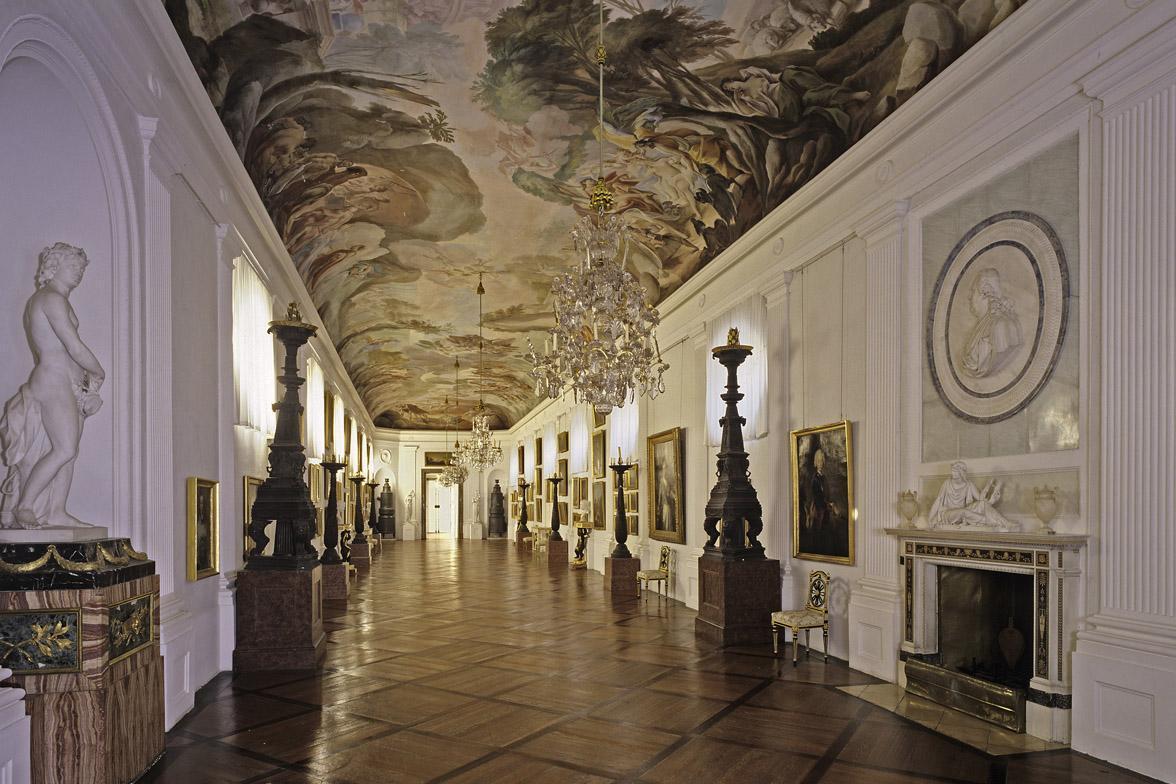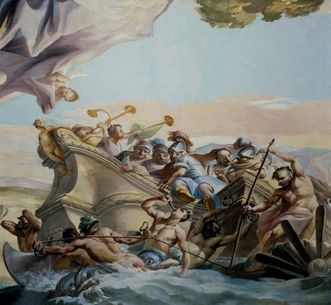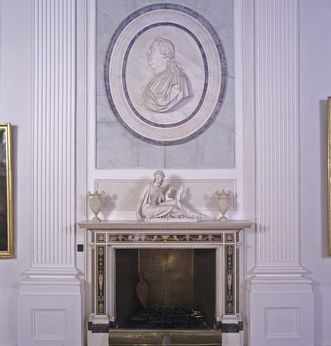Olympic gods and heroes
The long hall that acts as the connecting structure between the new central building and the west cavalier building was designed by architect Donato Giuseppe Frisoni to compliment the ancestral portrait gallery. At the express wish of Duke Eberhard Ludwig, Italian painter Pietro Scotti dedicated the ceiling fresco in the painting gallery to the history of the Trojan War. The Baroque decor was completed between 1731 and 1732.





